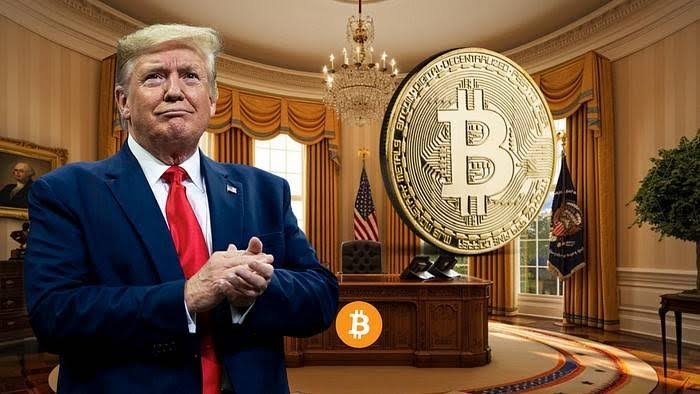In this article, we discuss everything you need to know about Layer 1 and Layer 2, including their differences and functions within blockchain technology.
The post Layer 1 vs. Layer 2: What, When, and Where to Use Them appeared first on Coindoo.
As blockchain technology is becoming increasingly more adopted, so does transaction data; thus, improving scalability and addressing potential pitfalls is mandatory. But what does improved scalability mean, and what does it have to do with Layer 1 vs. Layer 2 blockchain networks? Everything!
Since blockchain scalability refers to its ability to support the increased demand, it directly translates to a blockchain network’s ability to offer scaling solutions while maintaining its decentralized system and security.
-----Cryptonews AD----->>>Sign up for a Bybit account and claim exclusive rewards from the Bybit referral program! Plus, claim up to 6,045 USDT bonus at . https://www.bybit.com/invite?ref=PAR8BE
<<<-----Cryptonews AD-----
This is known as the Blockchain Scalability Trilemma, which relates to today’s topic, Layer 1 vs. Layer 2. In this article, we discuss everything you need to know about Layer 1 and Layer 2, including their differences and functions within blockchain technology.
Key Points
- Layer 1 is considered the foundation of the blockchain that sustains the application’s architecture;
- Popular Layer 1 examples include Bitcoin, Ethereum, Ripple, Cardano, and more;
- Layer 2 is the overlaying network responsible for processing more transactions faster and cheaper;
- Popular Layer 2 examples include Polygon, Arbitrum One, Optimism, Base, and others;
- The differences between Layer 1 and 2 can be seen in the purpose and the chosen scalability methods;
Layer 1 vs. Layer 2: Overview
We could say that Layer 1 and Layer 2 blockchain layers are add-ons of a blockchain network made to offer faster processing transactions. Depending on its time, they could also include protocol updates, network solutions, and other outputs to increase mainstream adoption, process transactions faster, and help blockchain networks scale up.
Moreover, at this step, it is essential to understand the main difference between Layer 1 and Layer 2, as they have different purposes and help a blockchain network but on other sides.
So, Layer 1 is the blockchain architecture, the structure upon which the applications are built. It includes updates on the block sizes, consensus mechanism, and even the database sharding. Popular examples of Layer 1 blockchain networks include Bitcoin, Ethereum, and BNB Chain.
Additionally, as Bitcoin is Layer 1, its second blockchain layer, or Layer 2, is the Lightning Network. It is a micropayment channel that scales up the blockchain network and processes multiple transactions faster and cheaply.
On the other hand, Layer 2 is an overlaying network responsible for bundling transactions, also known as rollups, side chains, and off-chain transactions, often called state channels.
The role of Layer 2 is to process transactions outside the main chain, meaning the main blockchain network, while it sits on top of an underlying blockchain.
Layer 1 vs Layer 2 Differences
There are two main differences between Layer 1 and 2, such as the purpose and the scalability methods.
When discussing the purpose of Layer 1, we can see that it is independent. All the data, such as the consensus and execution, are available on the main layer.
Yet, this is different with Layer 2 scaling solutions, as their main purpose is to help the underlying blockchain layer, making them dependent on Layer 1.
However, looking at the scalability methods and approaches, we can see that Layer 1 blockchain changes the consensus mechanism, sharding or forking, compared to Layer 2, which is the state channels, rollups, and side chains.
Layer 1 vs. Layer 2: Their Role
As we briefly mentioned the role of Layer 1 and Layer 2 scaling solutions, we must explain these concepts and break them down to understand their essential role within blockchain networks.
As we know, the blockchain has a decentralized nature, meaning that is a conglomerate of nodes that processes crypto transactions while the consensus protocol verifies the accuracy of the transactions. Once recorded, the transactions form a chain of data blocks that can’t be changed.
The pitfall of this mechanism is that the more popular and used a blockchain ecosystem becomes, the more computational power it needs, and the more protocols it has, the more it limits the number of processed transactions. Thus, it creates a bottleneck effect on the blockchain network and its overall capacity.
As a result, most popular blockchains are becoming slow, offering slow transactions that could take 10 minutes to process. This could cause frustration among traders and directly affect the network.
Therefore, to keep up with the increasing demand, scaling solutions have been created and implemented to help alleviate these consequences and hold a larger transaction volume. Also, each network has its turnarounds to solve these pitfalls, such as unloading the processing power onto other networks or improving the base layer through a code update.
Layer 1 vs. Layer 2 Popular Blockchains
Let’s see some of the most popular blockchain layers in action. A notable example of Layer 1 blockchain could be Bitcoin, Cardano, or the Ethereum blockchain, which handles transactions and security through Proof-of-Stake or Proof-of-Work.
In contrast, a Layer 2 blockchain relies on another blockchain or protocols for network and security infrastructure, thus processing transactions faster. The Polygon network is a good example that sits on top of the Ethereum and Bitcoin Lightning Network, or Coinbase, which has the Base blockchain, an Ethereum Layer 2 network.
Types of Layer 1 and Layer 2 Scaling Solutions
Layer 1 Blockchain Scaling Solutions
1. Increasing the Block Size
Increasing the block size isn’t new, and we already saw it in Bitcoin Cash when it upgraded its block size from 1 MB to 8 MB and later to 32 MB. However, what does this mean?
Increasing the block size means that the blockchain could sustain more transactions to be verified, expanding the overall capacity of the network. In BCH’s case, more than 100 transactions can be processed in one second, compared to Bitcoin, which only has seven transactions every 3 seconds.
Therefore, increasing the block size of this Layer 1 scaling solution brings a win-win for everyone.
2. Sharding
Just as we broke down the Layer 1 and Layer 2 concepts into subheadings, the same applies to sharding.
Similar to database dividing, sharding breaks down the blockchain database into smaller, more manageable parts, thus allowing multiple transactions at the same time and increasing the overall capacity of the Layer 1 blockchain network.
3. Updated Consensus Mechanisms
It is already known that the blockchain consensus mechanism helps validate transactions and ensure the entire network’s security. However, depending on the consensus mechanisms, different approaches may be needed.
In Bitcoin’s case, since it uses Proof-of-Work, extensive computational power is required to solve the math puzzles and record them as blocks on the blockchain.
In contrast, Ethereum initially used PoW but changed it to Proof-of-Stake, which requires node operators to lock in Ether deposits for a transaction to be completed. Furthermore, each consensus has its pros and cons, especially regarding transaction fees.
Layer 2 Blockchain Scaling Solutions
1. Rollups
Rollups have become increasingly adopted since they allow bundles of transactions to be rolled up into a single transaction, increasing the overall number of processed transactions. These transactions are recorded off-chain, bundled, and sent to the main chain to process one entry.
Also, rollups operate differently, as some may use a zero-knowledge mechanism, and others use the optimistic method. A good example of a Layer 2 network with a ZK rollup is StarkNet, while Optimism uses the Optimistic mechanism.
2. State Channels
State channels work in a two-way street between the blockchain and the off-chain channels to boost the overall transaction capacity and speed. Therefore, the transactions are bulk recorded on the main blockchain through a completed state on the main network. This is exactly how Bitcoin’s Lightning Network works.
Moreover, the state channels don’t require Layer 1 node validation since this approach is sealed through a multi-signature or smart contracts system.
3. Side Chains
Side chains are independent blockchain networks with their own validators, allowing and processing multiple transactions in parallel. As a result, transaction speed is increased, yet you must entrust the security of the side chain and the bridge between the blockchain network and the main chain.
Now that we’ve learned more about different Layer 1 and Layer 2 scaling solutions, we can examine the pros and cons of each type of blockchain layer.
Layer 1 vs. Layer 2 FAQ
What is Layer 1 vs Layer 2 blockchain?
Both Layer 1 and Layer 2 are part of a blockchain ecosystem, along with many others, such as hardware, data, applications, and others. Yet, Layer 1 is the primary blockchain layer, while Layer 2 scaling solutions are anything related to off-chain transactions.
Is Layer 1 or Layer 2 better?
There’s no such thing as better since it depends on the purpose of using them. Indeed, Layer 1 offers a more secure and decentralized base, while Layer 2 offers scalability solutions and cost-effectiveness.
What Is a Layer 1 Scaling Solution?
One notable example is Ethereum’s transition from Proof-of-Work to Prook-of-Stake, which directly impacts and reduces the required computational power and sets the record for hundreds of transactions per second.
Layer 1vs. Layer 2 Final Thoughts
In conclusion, both Layer 1 and Layer 2 blockchain solutions have strengths and weaknesses. While Layer 1 offers better security and decentralization, Layer 2 provides scalability and faster transactions.
Therefore, the best choice for a particular application depends on its specific needs. Still, undoubtedly, the future of blockchain technology likely involves a combination of Layer 1 and Layer 2 solutions working together to create a more secure, scalable, and user-friendly ecosystem.
The post Layer 1 vs. Layer 2: What, When, and Where to Use Them appeared first on Coindoo.




